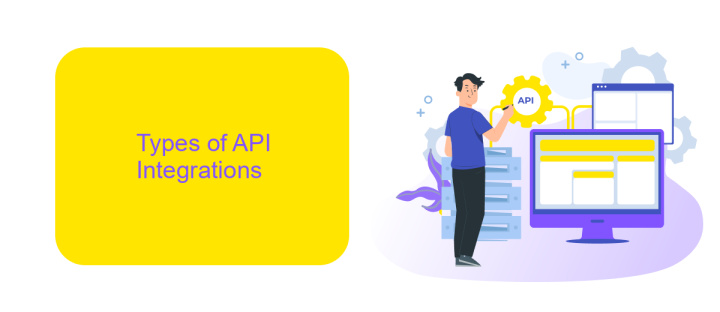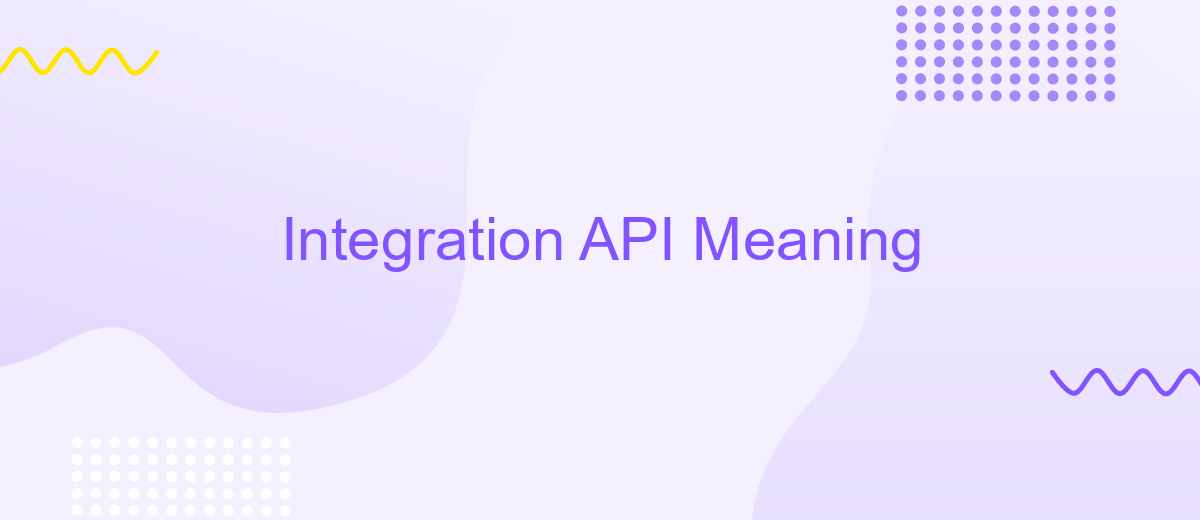Integration API Meaning
In today's interconnected digital landscape, Integration APIs play a pivotal role in enabling seamless communication between disparate software systems. By facilitating data exchange and functionality sharing, these APIs empower businesses to enhance their operational efficiency and drive innovation. Understanding the meaning and significance of Integration APIs is crucial for organizations aiming to optimize their technological infrastructure and stay competitive in an ever-evolving market. This article delves into the core concepts and benefits of Integration APIs.
What is API Integration?
API integration is a process that allows two or more software applications to communicate and interact with each other seamlessly. This interaction enables the exchange of data and functionalities between different systems, enhancing their capabilities without requiring manual intervention. By enabling applications to connect and share information, businesses can automate processes, improve efficiency, and deliver better user experiences.
- Facilitates seamless data exchange between systems.
- Automates workflows, reducing manual efforts.
- Enhances application functionalities through shared resources.
- Improves user experience by providing integrated services.
- Supports scalability and flexibility in system architecture.
API integration is essential in today's digital landscape, where interconnected systems are vital for operational success. It allows businesses to leverage existing technologies and build upon them, fostering innovation and agility. By enabling different applications to work together, API integration helps organizations streamline operations, cut costs, and adapt to changing market demands. Whether it's integrating payment gateways, social media platforms, or CRM systems, APIs are the backbone of modern digital ecosystems.
Types of API Integrations

API integrations come in various forms, each serving specific purposes and offering unique functionalities. One common type is the RESTful API integration, which uses HTTP requests to access and manipulate data. RESTful APIs are stateless and can handle multiple types of calls, making them versatile for web services. Another popular type is the SOAP API integration, which relies on XML-based messaging protocol. SOAP APIs are known for their robust security features and are often used in enterprise environments where security is a priority.
Additionally, there are GraphQL API integrations, which allow clients to request only the data they need, reducing the amount of data transferred and improving performance. For those seeking to simplify the integration process, services like ApiX-Drive offer automated solutions to connect different applications without the need for extensive coding knowledge. ApiX-Drive provides a user-friendly interface to set up integrations quickly, making it an ideal choice for businesses looking to streamline their operations through efficient API integration. These various types of API integrations cater to different needs, ensuring flexibility and efficiency in connecting disparate systems.
Benefits of API Integration

API integration offers numerous advantages for businesses and developers, streamlining processes and enhancing functionality. By enabling different software systems to communicate and share data seamlessly, API integration can significantly improve operational efficiency and user experience. This connectivity allows businesses to leverage existing technologies and platforms, reducing the need for redundant development efforts and enabling faster time-to-market for new applications and services.
- Improved Efficiency: Automating data exchange between systems reduces manual input and minimizes errors, saving time and resources.
- Enhanced User Experience: Seamless integration allows for more cohesive and intuitive user interactions across platforms.
- Scalability: APIs enable businesses to easily expand their capabilities by integrating with new services and technologies as they grow.
- Cost Savings: Leveraging existing APIs can reduce development costs and time, allowing businesses to focus on core competencies.
- Innovation: APIs provide access to a broader ecosystem of tools and services, fostering innovation and new business opportunities.
In today's digital landscape, API integration is a critical component for achieving technological agility and maintaining a competitive edge. By embracing these integrations, businesses can unlock new potential, drive innovation, and maintain relevance in an ever-evolving market. The strategic use of APIs not only enhances existing operations but also opens doors to future growth and development.
API Integration Best Practices & Examples

API integration is a crucial aspect of modern software development, enabling seamless communication between different systems and applications. To ensure successful API integration, it's essential to follow best practices that enhance efficiency and reliability.
Firstly, always prioritize security by implementing authentication and authorization protocols, such as OAuth. This ensures that only authorized users and applications can access your API. Secondly, maintain comprehensive and up-to-date documentation to assist developers in understanding and using your API effectively. Clear documentation reduces integration time and minimizes errors.
- Use versioning to manage changes and updates without disrupting existing integrations.
- Implement rate limiting to prevent abuse and ensure fair usage among clients.
- Design APIs to be RESTful, utilizing standard HTTP methods for consistency and ease of use.
Real-world examples of successful API integrations include the use of payment gateways like Stripe, which allow e-commerce platforms to process transactions seamlessly. Another example is social media integrations, where applications like Hootsuite aggregate multiple platforms for streamlined management. By adhering to these best practices, developers can create robust and efficient API integrations that enhance functionality and user experience.


Challenges and Considerations in API Integration
API integration presents numerous challenges that developers and businesses must navigate. One significant hurdle is ensuring compatibility between different systems and protocols, which can lead to unexpected issues during integration. Additionally, security is a paramount concern, as APIs can expose sensitive data if not properly secured. Developers must implement robust authentication and authorization mechanisms to protect against unauthorized access and data breaches.
Another consideration is the management of API versioning and updates. As APIs evolve, maintaining backward compatibility becomes crucial to prevent disruptions in service. Furthermore, monitoring and managing API performance is essential to ensure seamless operation and minimize downtime. Tools like ApiX-Drive can be instrumental in simplifying these processes, offering automated solutions for integrating and synchronizing data across diverse platforms. By leveraging such services, businesses can mitigate some of the complexities associated with API integration, allowing for more efficient and reliable operations.
FAQ
What is an Integration API?
How does an Integration API work?
What are the benefits of using Integration APIs?
How can businesses implement Integration APIs?
What is ApiX-Drive, and how does it relate to Integration APIs?
Apix-Drive is a universal tool that will quickly streamline any workflow, freeing you from routine and possible financial losses. Try ApiX-Drive in action and see how useful it is for you personally. In the meantime, when you are setting up connections between systems, think about where you are investing your free time, because now you will have much more of it.

